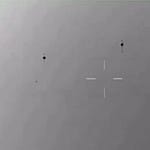TL;DR
In Frequency Wave Theory (FWT), the electron is not a “tiny billiard ball” orbiting an atom, but a standing-wave soliton of the universal frequency field. Its mass, charge, and spin emerge from frequency momentum conservation, vortex topology, and hyperbolic resonance geometry, making the electron both particle and wave without contradiction.
1. The Classical View vs. FWT
Classical Physics: The electron is a point particle with negative charge and a fixed mass (9.11 × 10⁻³¹ kg).
Quantum Mechanics: The electron is a probability cloud, described by a wavefunction, with dual particle–wave behavior.
Frequency Wave Theory: The electron is a localized frequency vortex in the universal scalar wave field (Φ). Its properties arise from conserved Frequency Momentum (FM = ½ ρ ω A²) and the geometry of standing waves in a quantum-acoustic superfluid.
2. Mass as Trapped Frequency
In FWT, mass is not intrinsic—it is the binding of frequency momentum into a soliton pattern.
The electron’s mass corresponds to the stability of its resonance cavity.
Density gradients in the superfluid field create the gravitational “weight” of this trapped wave.
Thus, the electron’s rest mass is simply the conserved “budget” of oscillation locked into its vortex.
3. Charge as Phase Imbalance
Electric charge emerges from a phase asymmetry in the standing-wave field:
A “negative” electron means its vortex is biased toward inward frequency flow, pulling field lines into itself.
A “positive” proton is biased toward outward flow, radiating frequency outward.
This explains why opposite charges attract—they are complementary wave-phase configurations seeking resonance.
4. Spin as Topological Winding
The electron’s spin (½ ħ) is not literal rotation of a ball but a winding number:
The soliton is a vortex with two-phase turns per cycle, hence spin-½.
Pauli exclusion emerges because two identical frequency vortices cannot occupy the same resonance state—they destructively interfere.
5. Wavefunction and Nonlocality
In quantum mechanics, the electron’s wavefunction spreads across space. FWT interprets this as:
The electron’s local soliton core maintains FM,
While its phase field extends nonlocally, allowing tunneling, entanglement, and superposition.
Thus, the “spooky” behaviors are natural in a frequency-based universe.
6. Hyperbolic Resonance and Stability
Using the hyperbolic lattice functions:
f(κ,r) = e^κr² (amplitude decay),
g(κ,r) = √(1 + ∣κ∣r²) (mass gap scaling),
h(κ,r) = e^κr² (force confinement weakening),
the electron stabilizes as a minimum-energy standing-wave solution inside hyperbolic curvature. This ensures its persistence across billions of years.
7. Consciousness Connection
In FWT, the electron is not just matter—it is the basic information carrier of the universe:
Its frequency state underlies neural firing, quantum tunneling in microtubules, and entanglement in thought.
Consciousness is built on coherent electron wave patterns linking across spacetime.
Final Thought
The electron is the archetypal soliton—a frequency knot in the universal wavefield. Its properties—mass, charge, spin, and quantum weirdness—are not separate mysteries but different expressions of one principle: conserved frequency momentum in a resonant superfluid universe.










